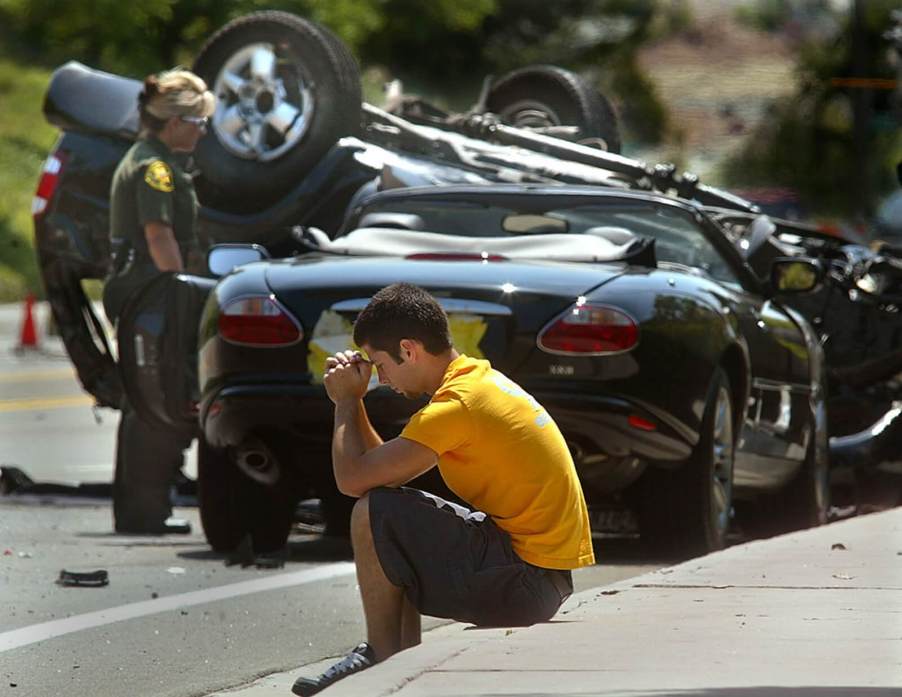
Study Shows You’re Responsible for 90% of Your Crashes, Reveals What You Can Do Differently
I am hopeful for the future of driving. Both cars and the next generation of drivers are getting safer. I recently wrote up how young driver fatality rates are down 45%, likely for multiple reasons. But even as cars get safer, the number of deadly accidents is climbing, up 16% in the past five years. What’s more, pedestrian fatality rates have been setting new records for the past half decade.
We now know that almost every accident is partially the fault of all drivers involved. Causes include:
- Impairment
- Fatigue
- Distraction
What’s more, we’re finding that texting and driving is SIX TIMES more fatal than drunk driving. Unnecessarily complex infotainment systems are also proving deadly.
Many modern cars have comprehensive safety systems such as crumple zones and arsenals of airbags our ancestors could only have dreamed about. In addition, the newest cars often come with driver aid safety software such as lane-keep assist and automated emergency braking. With crashes and deaths still on the rise, it is easy to throw up our hands and say, “We’ve tried everything. Time to outlaw human drivers.” I’ve seen multiple recent op-eds suggesting exactly that. But a recent study published by the National Academy of Sciences found we have much more control than we may think And there’s still a lot we haven’t tried.
The researchers used footage from dash cameras and driver-monitoring systems to collect data on driver behavior leading up to crashes. They broke down exactly what happened during 905 separate crashes. You could say they concluded that “accidents” are rarely accidental.

In 90% of the crashes, driver-related factors contributed to the “accident.” Remember, the researchers were only studying one half of the equation, one of the two drivers involved. So that 90% number includes situations where the driver being studied might not have been “at fault.” But they almost always still contributed.
At first, I was shocked at these results. But then I thought about it. I’ve certainly had other drivers do bone-headed things around me. And my first response was always “What a jerk, they should look where they are going!” But if I am truly honest, these situations only ever devolved into crashes when I was also fatigued or distracted. Even when it wasn’t technically my “fault.”
Obviously, things do happen on the road that are just outside of your control. Some accidents are truly unavoidable. But this study found that if we’re being blunt, that’s the vast minority of cases.
So what can you do? The major driver-related crash factors the study found aren’t shocking: impairment, fatigue, and distraction.

If you haven’t been living under a rock, you know that driving drunk or high is very dangerous. And you know that there has been a decades-long crackdown that has had real-world impact. Fatigue is a bit less publicized. And that’s one I often ignore because it doesn’t “feel” as dangerous. But it can be just as bad. Obviously falling asleep while nodding off is deadly. But if you are just tired enough to have slower reaction times, you’re at risk.
Distraction is the risk factor that the study found is on the rise. Handheld electronic devices are the big killer here. Literally. The U.S. alone is up to eight distracted driving deaths. Every day.
NHTSA studies have found that driving while looking at your cellphone can be six times more dangerous than driving drunk. That sounds insane. But looking down for five seconds to send a text is like driving the length of a football field with your eyes closed and hoping no one jumps out in front of you or hits the brakes. And we’ve already established that a lot of the drivers around you are bone heads. These rising crash numbers and pedestrian deaths are beginning to make some sense.

That’s not all. Researchers are finding increasingly complex in-car infotainment systems are also causing distracted driving. Moving HVAC and radio controls to touchscreens is especially dangerous because you must take your eyes off the road to find them. It also takes longer to complete these tasks via touchscreen than via physical controls.
I expect we’ll see anti-texting campaigns ramp up to near anti-drunk-driving campaign levels. And that’s a great thing. But we can all get ahead of it now by just tossing the damn cellphone in the glovebox until we put the car in park.
Reducing the number of screens could be more complex. But not impossible. European regulators just announced that vehicles must have some physical controls and fewer screens to earn the highest possible safety scores. I’m hoping the U.S. passes similar changes soon.
No, we haven’t tried everything. And it’s not time to abolish human drivers. Driving has been safer in the past, and it can be safer again. But we must start by all taking more responsibility.
Sources: Proceedings of the National Academy of Science, USA Today NHTSA



